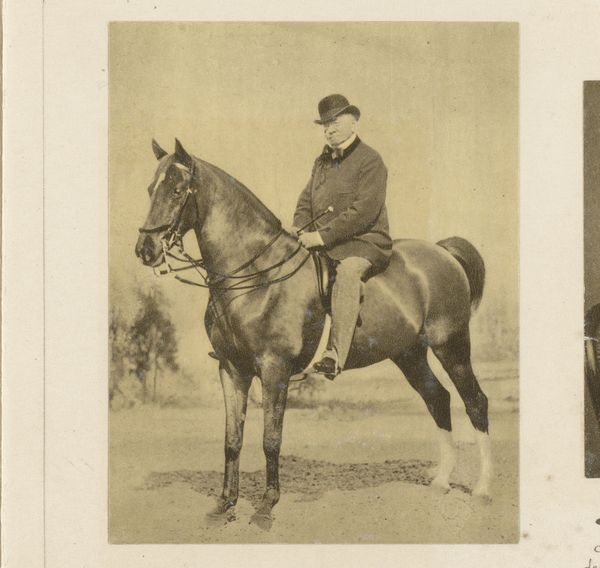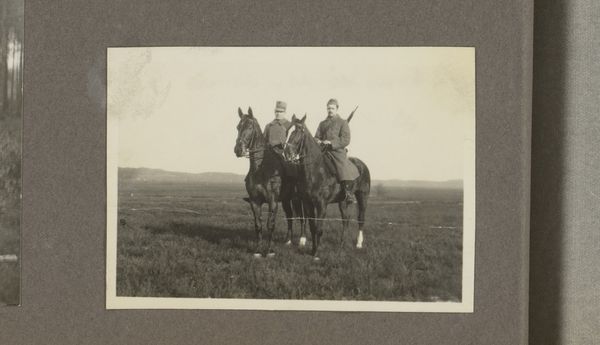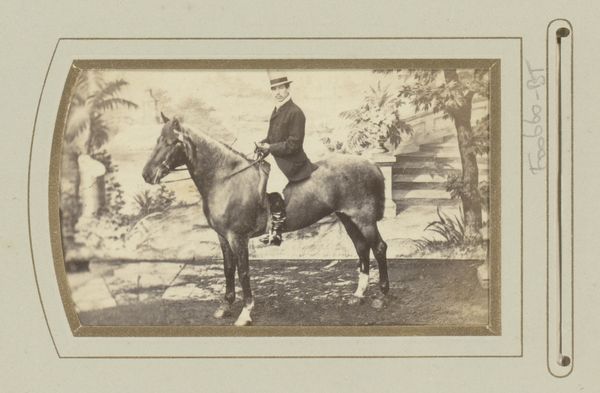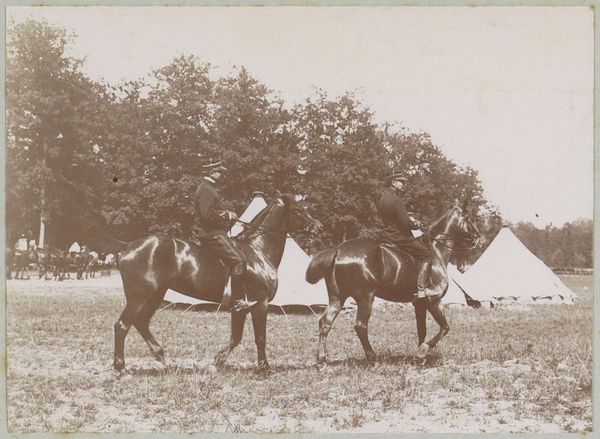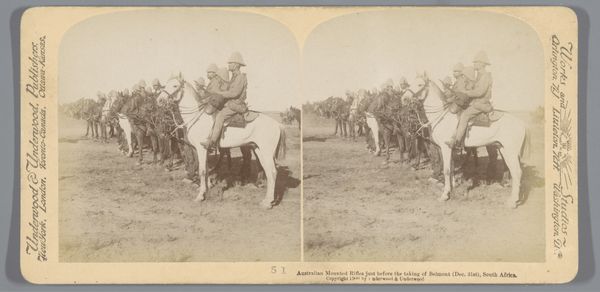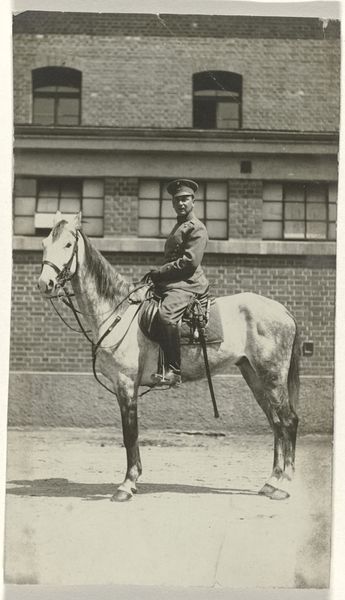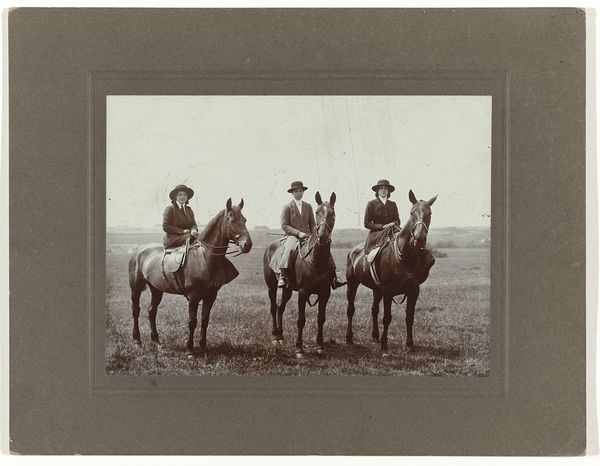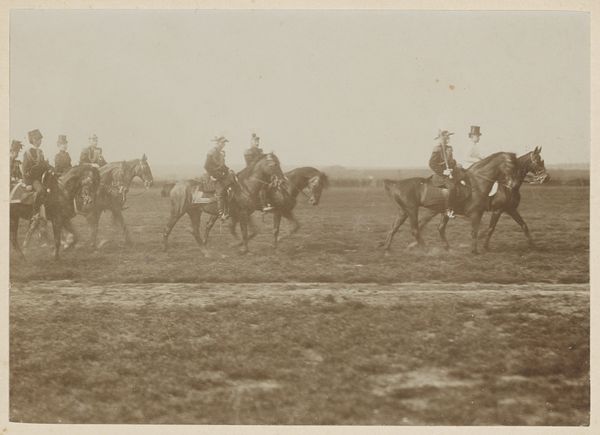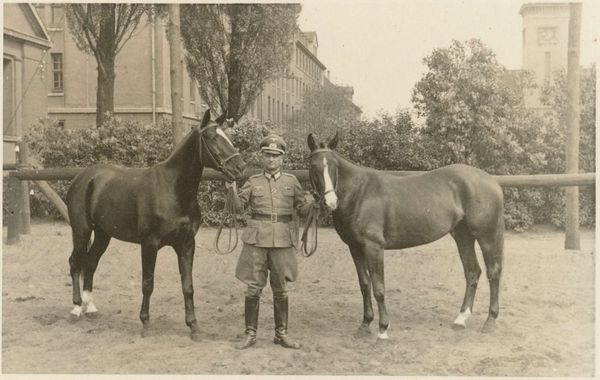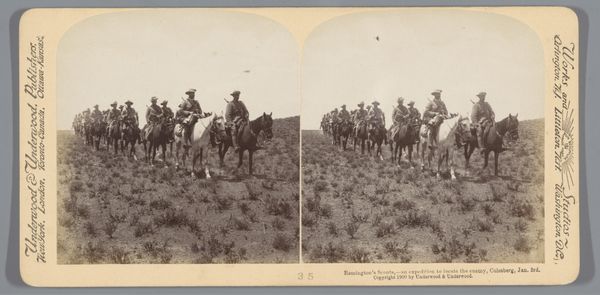
photography
#
portrait
#
dutch-golden-age
#
landscape
#
photography
#
historical photography
#
realism
Dimensions: height 74 mm, width 127 mm
Copyright: Rijks Museum: Open Domain
Curator: It’s striking, isn't it? Such a stoic representation. We’re looking at an early photograph, possibly before 1915, titled "Koningin Wilhelmina en metgezellen te paard," which translates to Queen Wilhelmina and companions on horseback. Editor: Yes, there is a stark contrast between the Queen and the men flanking her. My first thought is about the photographic print itself – its creation, development, and the sheer physicality required to produce this image at that time. It emphasizes how images like this become powerful tools, shaping public perception and cementing social structures through visibility. Curator: Exactly. Note how Wilhelmina, a woman in a position of power, is centered. Photography, as a relatively new medium, offered opportunities for controlled representation and the dissemination of specific messages about national identity, female leadership, and colonial power. Editor: Thinking materially, there must have been such effort to transport cameras and equipment on site and develop it so quickly. Curator: Indeed. The photograph's inherent "realism," a defining feature of photographic prints, contributed to its perceived authority. We might question, however, what that term itself means considering its very staged nature. What societal values were reinforced here by those carefully crafted images? Editor: I am interested in those labor relations behind image creation as it existed historically and now in contemporary photography as well. What about access, then, and who has the capacity to own cameras, materials and the darkroom? What did all this amount to? The access! The wealth! Curator: The act of taking such a picture would have definitely held particular power in the context of early 20th-century colonialism. To delve further, Wilhelmina's attire is carefully constructed, representing authority but also, paradoxically, her limitations. Editor: So interesting. When we engage critically with materiality we find ourselves acknowledging how every element becomes politically charged, every item selected deliberately, as another decision to influence its viewing public, no? Curator: Absolutely. Reflecting on this image today, it compels us to examine how early photography participated in shaping not only individual portraits but also wider narratives about gender roles and the constructed image of female rulers at the time. Editor: Indeed, I'll remember now to view it always through the lens of materiality, revealing critical insight into processes that both solidify power structures and yet carry the seeds of their own dismantling.
Comments
No comments
Be the first to comment and join the conversation on the ultimate creative platform.
